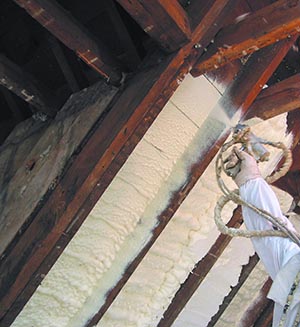As the autumn nights start drawing in and the weather starts to worsen, it’s important to get your home winter-ready for when strong winds, rain and snow hit. Fortunately, there are a few simple steps you can take to make sure you don’t get caught out.
Here are some top tips to ensure that your home is protected from harsh winter weather.
Some simple solutions
When gutters and drains get clogged with debris, water will start to collect and can eventually start leaking into your roof. The simple solution? Clear your gutters to avoid this fateful scenario.
Check your window frames and woodwork…fill any cracks and put on a coat of paint if needed.
Extreme temperatures and wet weather can cause untreated wood to expand and rot, so treating windowsills helps to prevent this.

If you have a chimney, it’s easy to forget about cleaning and keeping it in good condition.
Chimney fires can occur fairly frequently during the winter months, so think about employing a professional to clean and take care of your chimney.
If a roof is in disrepair, strong winds and the weight of snow can wreak havoc on your roof. Making repairs now will prevent leaks that can cause deterioration to the structure…check for any cracked, missing, or loose tiles and replace them.
It’s a good idea to get your boiler serviced before the cold weather really kicks in…having no central heating over the winter period is the last thing you want.
Get insulation – and not just a scarf and gloves!
But what about long-term measures to keep your home in top condition? An increasingly popular ‘fit and forget’ solution is to install spray foam insulation. This new technology is gaining popularity with existing homeowners as well as those building bespoke, high performance new builds.
In some situations, you can save up to 50% on your energy bills by having spray foam insulation installed. Of the many brands available, Icynene® Spray Foam, developed in Canada, now comes with comprehensive UK and European certification.
But don’t I have loft insulation already?
Most heat is lost through air leakage and it’s difficult to seal a building well with materials such as glass wool. Spray foam insulation expands within seconds and seals all the gaps and hard to reach spaces. It minimises air leakage and cold bridging, far more effectively.
Modern day spray foams such as Icynene® are water blown which means that the foam doesn’t contain any harmful chemicals, and they require no maintenance.
Start with Roof Insulation
Around a quarter of the heat in your house is lost through the roof, so insulating this space is a good place to begin.
Traditionally, these spaces above the ceiling have been left uninsulated, and although this is a simple and cheap building solution it’s highly inefficient when it comes to retaining heat.
Rooms in the roof with coombed (sloping) ceilings can also be effectively insulated to eliminate drafts and offers the added bonus of keeping the rooms cooler in summer.
Don’t forget the floor
If access allows, there is the option of insulating underneath the property which is often overlooked. When warm air escapes, air is drawn in to replace it and the most direct route is likely to be from below.

What we don’t want is for any of this cold fresh air to come up through the floor. The answer is to spray insulation directly under the floorboards, which creates an airtight seal but maintains ventilation. In most cases, the process can be completed in less than a day.
What can I do with traditional masonry walls?
Masonry walls are considered hard to treat and there aren’t many options available to the homeowner… however Icynene Spray Foam can make the difference.
Icynene® open cell foam is vapour permeable and allows the building to breathe
naturally…ideal for traditional masonry walls.
Small pilot holes are drilled from the inside to the external walls and the foam is injected behind the lath and plaster to eliminate heat losses – a technique recognised by Historic Scotland, and the system is approved by the Energy Saving Trust (EST) so if you’re worried about keeping the costs down, it might be worth looking into the grants and schemes available.
The key to a warmer, more comfortable home A home insulated with Icynene® Spray Foam can significantly reduce your energy bills.
Existing customers have noticed dramatic, instant improvements to the thermal performance of their homes, increasing comfort levels and reducing drafts.
Where can I find my local supplier?
JHJ Insulations, based in Rothienorman, are fully trained and licenced by Icynene® to carry out the work; their installations come with a 25 year product warranty as standard.
They’re registered with the EST and you can contact them to arrange a free survey and insulation advice at info@jhjinsulations.co.uk or call 01464871371 / 07764478487.
Visit the Energy Saving Trust website or call 0808 808 2282.